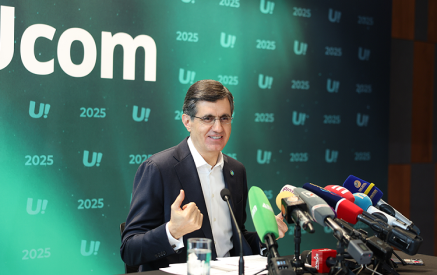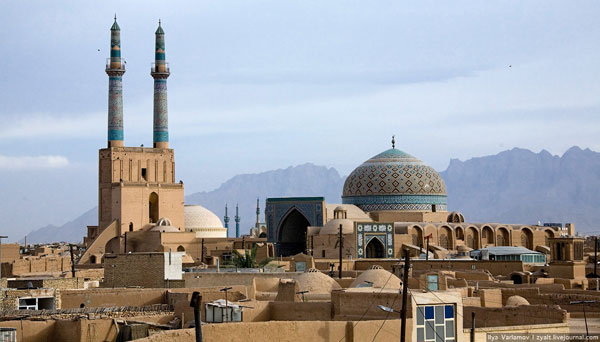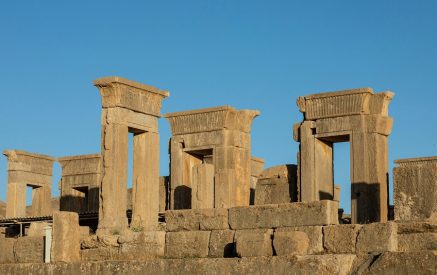Iran’s nuclear program seems to arrive at its final solution—along with six world powers (5 UN Security Council members and Germany) Tehran reached a preliminary agreement on its nuclear program in Lausanne, Switzerland, April 2. While a final document hasn’t been signed yet, it is planned to come up with a comprehensive agreement till 30 June 2015, under which Iran will restrict its nuclear program, and sanctions against the Islamic Republic will be lifted instead.
The recent “thawing” between Iran and the West rises hope in world’s challenged capitals, that Tehran’s nuclear problem will be resolved at last, and in the near future it can become a safe partner for the USA and the EU in the Middle East.
Iran has immense oil and gas reserves; by various estimates 16-18% of world’s gas resources belong to this country. Iran holds the second place on gas reserves in the world, and the third place on oil.
Some analysts believe, that in the near future the USA and the European Union can seriously consider Iran as a gas supplier in Europe instead of Russia, and, thus the Kremlin will be deprived of its last powerful weaponry in its political arsenal, i.e gas, through which it puts pressure upon other states. Officials in Tehran have repeatedly announced that Iran can export gas to Europe and be its safe partner in a long run.
Read also
Therefore, if Iran’s nuclear conundrum finds its solution, the issue of supplying Iranian gas to Europe will emerge, and a number of capitals will fight to become a transit route to that end.
One of the possible options is from “South Pars” gas field to European markets under the “Pars” pipeline project through Turkey. Despite the existing antagonism between Tehran and Ankara over the conflicts in Syria and Yemen, the most reliable and profitable option seems through Turkey. It’s worth mentioning, by that Turkey will gain more importance in the region, especially when Ankara is eager to lead the Islamic world in the Middle East. Therefore, Turkey’s consolidated position in the region is not so desired for the EU, Iran and Armenia.
Second option to transport the Iranian gas to Europe is through “the Southern gas corridor”—a project that is designed to support the Baku-Tbilisi-Erzurum pipeline, as well as to construct Trans-Anatolian Natural Gas Pipeline (TANAP) which stretches from Azerbaijan to Turkey, then to Europe through Trans-Adriatic Pipeline (TAP), thus transmitting gas from Turkey to some European countries.
The groundbreaking ceremony of TANAP took place on 17 March, 2015, in Kars. The presidents of Turkey, Azerbaijan and Georgia were its major participants. This project has targeted at eliminating Europe’s dependency on Russian gas and diversifying its energy supplies: European officials have repeatedly stated this as EU’s strategic goal.
While Azerbaijan is considered as the main gas supplier to the “Southern gas corridor,” Turkmenistan and Iran are also likely to join the project. The first supply to Europe is scheduled in 2019-2020. It’s anticipated, that by 2020 10-20% of EU’s gas demand will be satisfied through the “Southern gas corridor.”
After the Lausanne preliminary agreement between Iran and six world powers on 2 April Iran has already received first proposals to join the TANAP pipeline. Particularly, Rovnag Abdullayev, the president of the State Oil Company of Azerbaijan Republic (SOCAR), announced 5 April 2015, that Iran is interested to buy a share of Trans-Anatolian TANAP pipeline. He also noted that after lifting sanctions against Tehran, Iran will increase its volume of gas export, and there is no any other way for that but the TANAP. A couple of days later Taner Yildiz, Turkish Minister of Energy and Natural Resources, appeared with a likewise statement.
As for the third option, theoretically it is possible exporting gas from Iran to Europe through NABUCCO pipeline—an unfinished project which is currently frozen, but can be refreshed to deliver gas to European consumers through Azerbaijan, Georgia and Turkey. NABUCCO pipeline has been worked out in 2002, and at the earliest stage of planning envisaged gas supply from Iranian fields to Azerbaijan, then to Europe through Georgia and Turkey.
Due to Tehran’s nuclear ambitions, a decision was made in 2006 to exclude Iran from that project and to include Turkmenistan and Uzbekistan instead. Later on, after deterioration of relations between the West and Uzbekistan, the latter was also expelled from it.
Initially it was planned to start the construction of NABUCCO pipeline in 2011, finishing it in 2014. However, its exploitation was delayed a couple of times due to problems with potential gas suppliers. It became clear, that the volumes of gas in Azerbaijani Shah-Deniz field aren’t sufficient enough to make the project profitable and economically justified.
In 2013 a statement was made, that NABUCCO project has been suspended, but probably it will operate in a modified form, including Iran in it. Tehran has regularly announced, that Iran is ready to join NABUCCO pipeline. Turkish president Recep Tayyip Erdogan also supported Iran’s participation in it, stressing few times, that the NABUCCO project will have no sense without Iran.
Fourth theoretical option to export Iranian gas to Europe is construction of Iran-Armenia-Georgia pipeline, which can transmit gas through the bottom of the Black Sea. Compared to other options, this is the most desirable one for Iran, as it wouldn’t consolidate Turkey’s and Azerbaijan’s position in the region.
Armenia is a trustworthy partner for Iran. Iranian officials have underlined many times, that Tehran would like to deepen its relationship with Yerevan in all fields, including the energy. But, taking into account Armenia’s dependency on Russia, this option does not seem sustainable for Iran yet, as the Kremlin has no desire to be deprived of its monopoly in supplying gas to Europe.
Yet in 2005, when the construction of Iran-Armenia gas pipeline was in process, Russian officials expressed a concern, that the pipeline might become a serious challenge for Russia in terms of its strategic interests. Thus, under Moscow’s pressure the pipeline diameter in the territory of Armenia was reduced to 711mm starting from Meghri, an Armenian-Iranian border town, while its diameter on the Iranian side comprises 1,5m.
Armenian-Iranian gas pipeline, particularly its Armenian share was captured by the Kremlin-backed Gazprom Company in past years that, in fact, deprived Armenia of any possibility to export Iranian gas to Europe through its territory. Therefore, only in case of fundamental guarantees on gas supply to Europe given to Iran, construction of a new pipeline is a must, as Iran should be confident, that the pipeline will uninterruptedly operate in Armenian territory.
Quite recently Mohammad Reisi, Islamic Republic’s Ambassador to Armenia, also spoke on the perspectives to export Iranian gas to Europe through the territory of Armenia. In his interview, given to Armenia TV channel, he stated, that Armenia is an economically profitable and safe way with this respect. He particularly stressed: “There haven’t been any talks on exporting Iranian gas to Europe yet, but if such discussions emerge, then Armenian option also might be considered as a short, safe and economically profitable one.”
It’s not finally clear how relations between Iran and the West will develop, but Armenia must be ready for all scenarios. At least one thing is obvious: surrounded by Turkey and Azerbaijan, Armenia is interested in stable and strong Iran. It is a natural ally for Armenia. Despite their higher potential, economic ties between Armenia and Iran are not properly developed, as international sanctions against Iran remain an obstacle for developing trade and economic relations.
Construction of Iran-Armenia railway will especially boost the development of commercial and economic ties between Yerevan and Tehran. This will give Armenia an opportunity to export its goods to Iran, and through its territory, to Persian Gulf. In its turn, Iran will have an access to Georgia, then to Europe and Russia through the communication via Armenia.
Thus, the normalization of Iran’s relations with the West is deeply in Armenia’s interest. The project of Iran-Armenia railway is estimated USD 3-4 billion. After lifting the sanctions against Iran, when Tehran considerably will gain big profits from gas sale, it can think over and undertake investing the construction of the railway.
It is noteworthy to mention, that after “the Southern gas corridor” project Azerbaijan has become a serious factor in the regional politics. Hence, Armenia should exert all efforts to become a transit country to export Iranian gas to Europe, thus also increasing its role in the region. If another regional project bypasses Armenia, it will be more isolated from the world.
Whereas puzzling out the Iranian nuclear conundrum promises to open brilliant opportunities for Armenia, to strengthen and to boost its security level…
Armen Vardanyan
Program Manager, Iranian studies
The Armenian Institute of International and Security Affairs (AIISA)























































